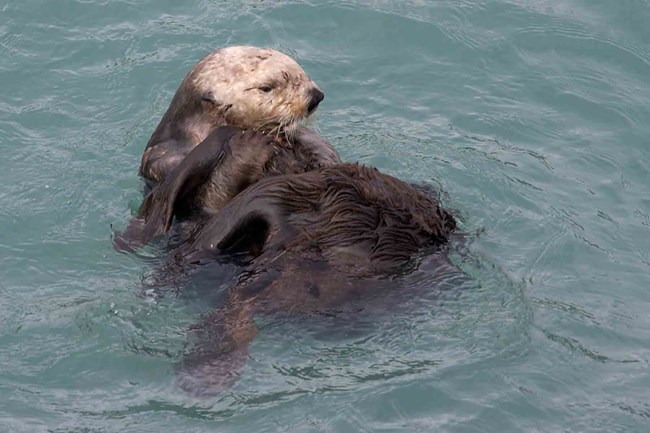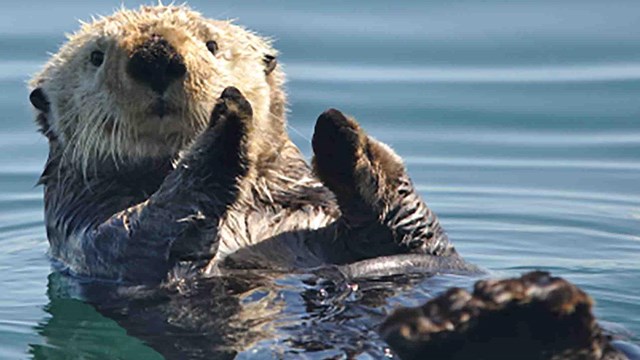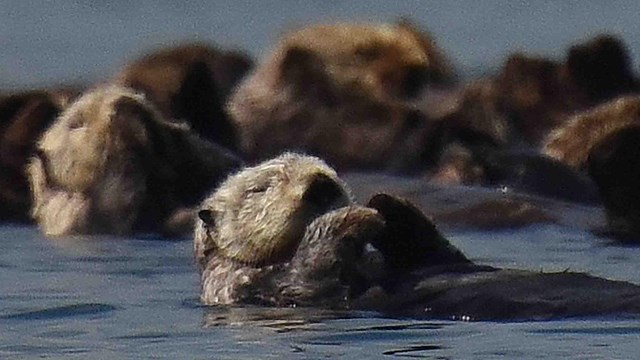
NPS/Jim Pfeiffenberger
Whether frolicking on shore or floating serenely on their backs in the ocean, otters seem to have perfected the art of relaxation. And, in fact, the protected coves and shallow waters of Alaska’s coastal parks provide ideal habitat for both sea otters and river otters.
Life for these playful mammals is not as idyllic as it might appear. As with all wildlife, they are highly susceptible to human activity. Sea otters were driven nearly to extinction by the commercial fur trade in the early 1900s. Once commercial hunting was banned, their numbers rebounded; however, both otter species remain vulnerable to oil spills, pollution, disease, and entanglement in fish nets.
Learn more about sea otter research in Glacier Bay National Park.
River otters are more abundant in the northern part of the state, while river and sea otters can be found in Gulf of Alaska parks. To tell the difference, simply observe their behavior. Only sea otters float on their backs. They are clumsy on land and rarely leave the ocean. River otters, on the other hand, glide effortlessly between shore and water.

The Southwest Alaska Network monitors sea otters as part of a larger effort of nearshore ecosystem monitoring.

The Southeast Alaska Network monitors sea otters using innovative methods for insightful results.
Learn more about otters
Last updated: July 16, 2019
